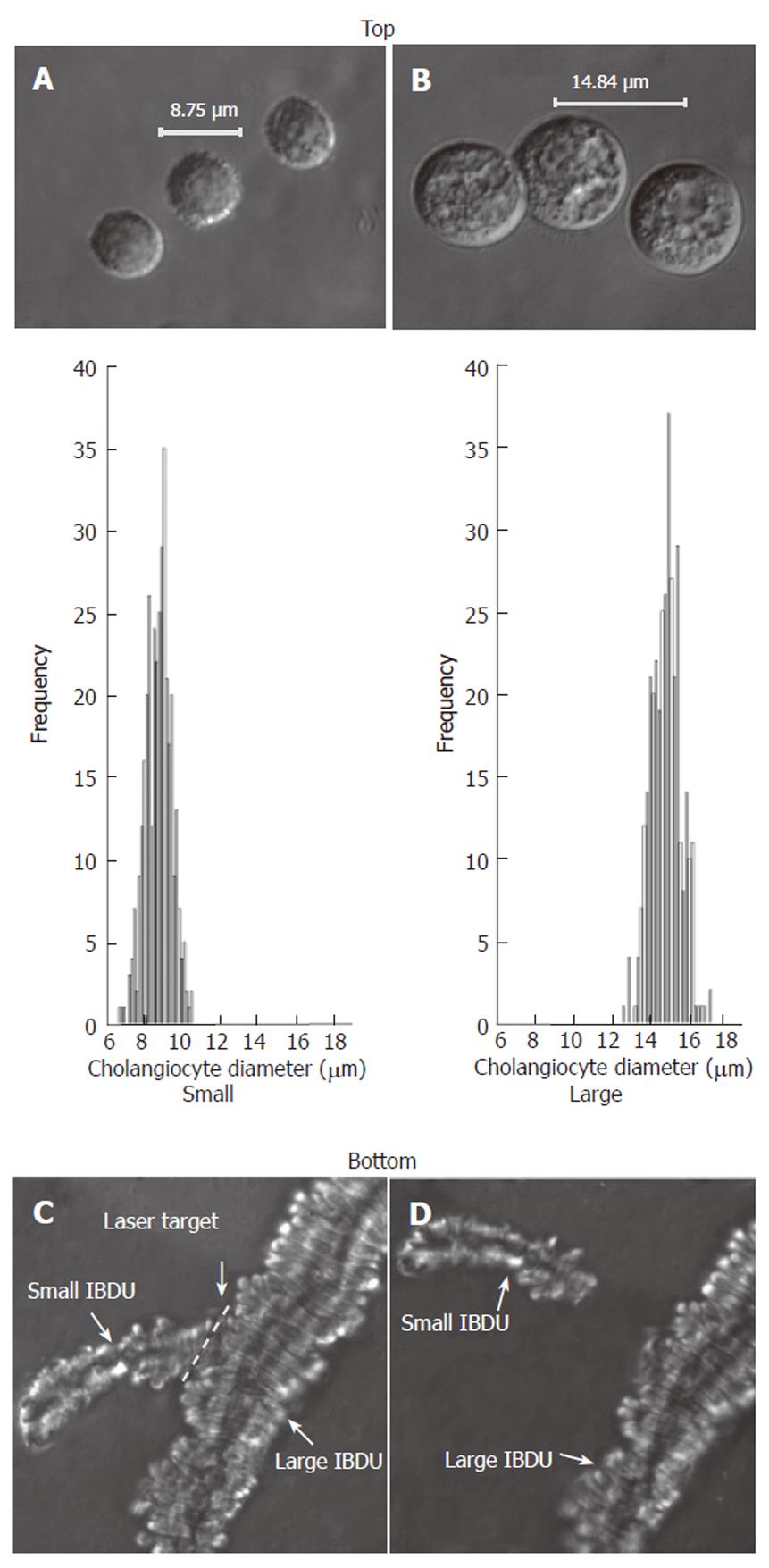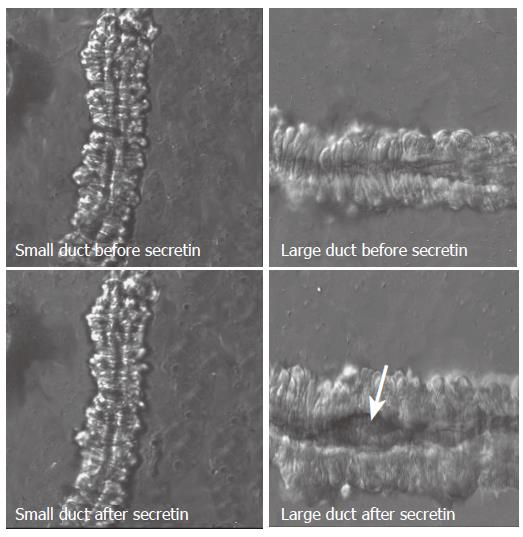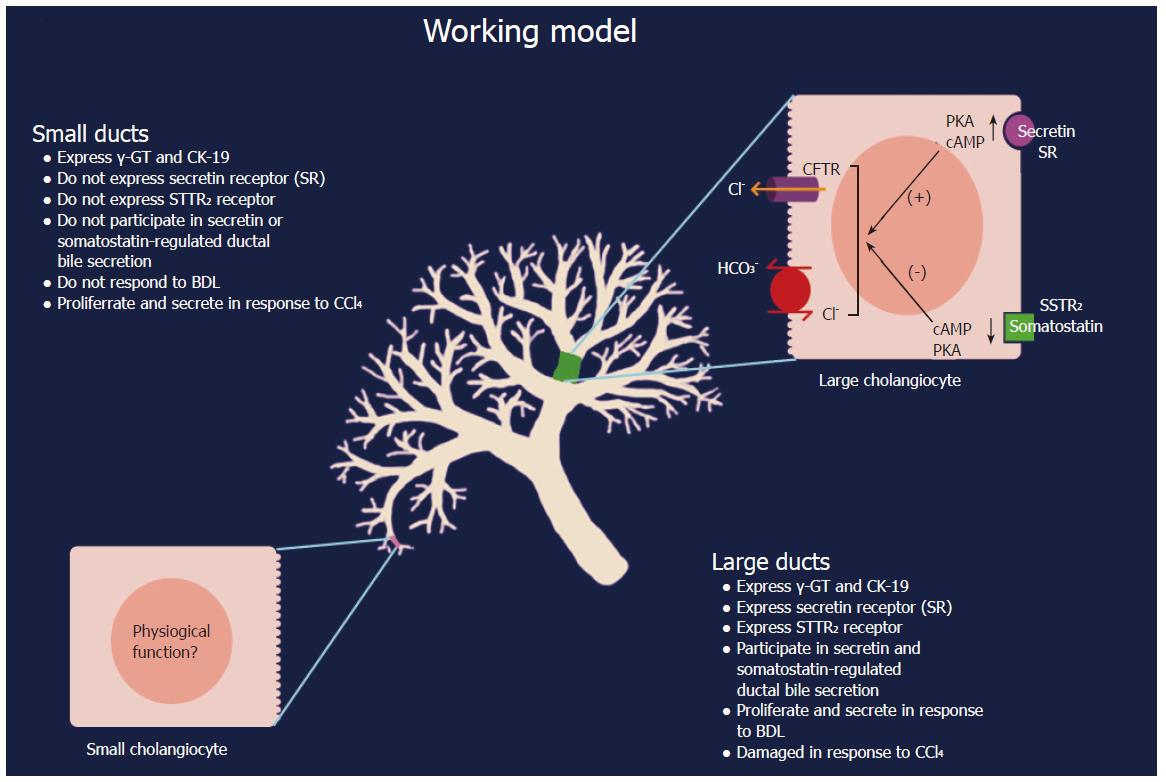Copyright
©2006 Baishideng Publishing Group Co.
World J Gastroenterol. Jun 14, 2006; 12(22): 3523-3536
Published online Jun 14, 2006. doi: 10.3748/wjg.v12.i22.3523
Published online Jun 14, 2006. doi: 10.3748/wjg.v12.i22.3523
Figure 1 [Top] Isolation of small (A), approximately 8 μm diameter] and large (B), approximately 14 μm diameter] cholangiocytes from small and large ducts, respectively, from normal rats.
Small and large cholangiocytes were purified by counterflow elutriation followed by immunoaffinity purification. Original magn., × 625. Reproduced with permission from Ref[12]. [Bottom] Isolation of small (C) and large (D) IBDU from normal rat liver. Small (< 15 μm in diameter) and large (> 15 μm in diameter) IBDU were pruned off from large ducts by a nitrogen pulsed dye laser and subsequently separated (D) by picking up IBDU with a micromanipulator micropipet. Original magnification × 2000. Reproduced with permission from Ref 13.
Figure 2 Measurement of H3 histone gene expression in small and large cholangiocytes from 1-wk BDL rats and 1-wk BDL rats treated with CCl4 or mineral oil.
H3 histone gene expression in large cholangiocytes decreased on d 2 before returning to control values on d 7 after CCl4 treatment. H3 histone gene expression (which was absent in small cholangiocytes from BDL rats) was expressed by small cholangiocytes on d 1 and 2 before returning to control undetectable values on d 7 after CCl4 treatment. Administration of mineral oil to 1-wk BDL rats did not alter H3 histone gene expression in large cholangiocytes. The message for H3 histone gene was absent in small cholangiocytes from oil-treated rats. Comparability of RNA used was assessed by hybridization for GAPDH (housekeeping gene). Autoradiograms were quantified by densitometry. Densitometric values are means of 2 experiments. Reproduced with permission from Ref 50.
Figure 3 Working model for the heterogeneity of the intrahepatic biliary epithelium.
The model proposes that: (1) bile ducts are morphologically heterogeneous with small ducts lined by small cholangiocytes and large ducts lined by large cholangiocytes; (2) small and large ducts similarly express both γ-GT and cytokeratin-19; and (3) large (but not small) ducts express the secretin and somatostatin receptor, CFTR and Cl-/HCO3- and respond physiologically to these two hormones. The model also shows that following BDL, only large cholangiocytes proliferate and that a single dose of CCl4 induces damage and loss of large duct function, whereas small cholangiocytes (resistant to CCl4) de novo proliferate and secrete to compensate for the loss of large duct function. Reproduced with permission from Ref. 73.
- Citation: Glaser S, Francis H, DeMorrow S, LeSage G, Fava G, Marzioni M, Venter J, Alpini G. Heterogeneity of the intrahepatic biliary epithelium. World J Gastroenterol 2006; 12(22): 3523-3536
- URL: https://www.wjgnet.com/1007-9327/full/v12/i22/3523.htm
- DOI: https://dx.doi.org/10.3748/wjg.v12.i22.3523















